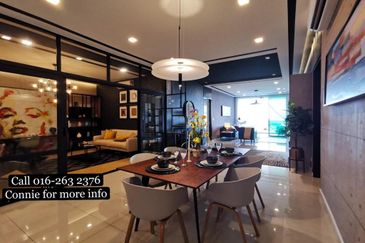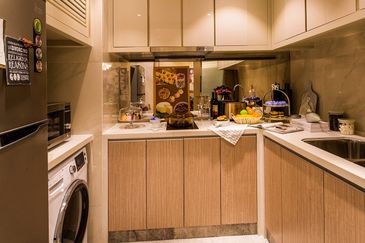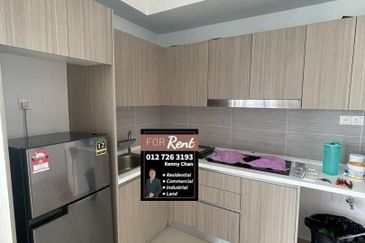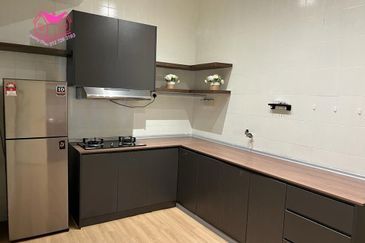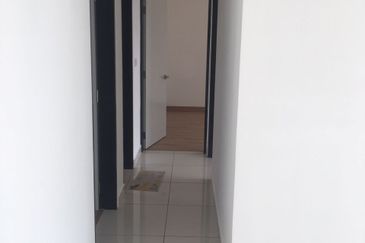IT has been a little over a year since United Malayan Land Bhd (UMLand) was taken private. According to group CEO Charlie Chia Lui Meng, “We have progressed by leaps and bounds since then. In fact, the Johor market is so hot that we are trying to get more products into the market as soon as possible.”
Construction is underway on the upper floors of the residential and serviced apartment components of the developer’s new office in Suasana Bukit Ceylon in Persiaran Raja Chulan when City & Country drops by for an interview. This part of Kuala Lumpur is surprisingly green and peaceful.
“We expect the building to be completed within the next few months,” Chia says as we are ushered into his large and brightly lit office.
Certainly, things are looking up. But while the Iskandar Malaysia market has heated up, the number of competitors has also increased.
With many developers racing to release their products, Chia believes it is important to reduce the incubation period of UMLand’s projects so that they can be launched in a timely manner. Other challenges he faces include tackling product quality and design innovation while increasing brand presence.
Making hay while the sun shines
UMLand has grown substantially since it was incorporated in 1961 and listed on Bursa Malaysia in 1965 as a mid-range developer offering niche products and targeting owner-occupiers. Recently, it ventured into hotel and mall management.
With its decades of experience, the group is one of the major players in Johor and owns about 2,000 acres of undeveloped land, 90% of which is in the southern state. The estimated gross development value of the land is RM9.36 billion.
Aiming to make hay while the sun shines, UMLand is expected to launch several projects by 2Q2014, all in Johor, its home turf.
These include residential and commercial properties in its existing Seri Alam and Seri Austin townships as well as niche developments in Puteri Harbour and Medini. Also in the pipeline are two industrial projects in Pulai Jaya and Cahaya Baru.
 |
| Johor Baru is considered one of the fastest growing centres of development. This has become very clear, especially in the past 18 months. — Chia |
Johor focus
Most of UMLand’s recent and upcoming activities are centred in the southern state. “Johor Baru is considered one of the fastest growing centres of development. This has become very clear, especially in the past 18 months. Now, Iskandar Malaysia is featured on Singapore TV almost every other day,” Chia remarks.
At the moment, Singaporeans make up about 30% to 40% of UMLand’s customers while the rest include the Japanese, Chinese and Indonesians.
The entry of Singapore’s investment vehicle Temasek Holdings and international names like Pinewood Studios, Legoland, Marlborough College, the Traders Hotel and the Hello Kitty theme park has made Johor a new property hot spot.
Public interest and investor confidence have also picked up due to the continuing rise in property prices in Singapore. As a result, many investors in the region are eyeing the Johor property market.
“They want to enjoy a bigger space but at the same time have access to Singapore, which is an international financial and commercial hub with top-notch education and medical facilities,” comments Chia.
At the moment, the focus is on Medini because of the benefits and tax incentives offered to the foreigners, he adds. And with the green light from the authorities to build high-density products in the greenfield region (which translates into higher profits), many developers are now rushing to launch their projects so that they can cash in their investments.
Chia, however, says he has noticed that the locals have been slowly shifting their focus away from Nusajaya in the past six months, resulting in more development activity spreading towards the north of Medini.
 |
| Suasana Bukit Ceylon in Persiaran Raja Chulan |
Diversifying into hospitality and mall management
UMLand is aggressively strengthening its position in Johor while diversifying its revenue stream with an investment portfolio that will comprise hotels and malls.
With the government actively encouraging multinational corporations to set up shop in the state, Chia says there is a shortage of and urgent need for products for them, especially Grade-A offices.
UMLand made its foray into the hospitality market early last year with Somerset Puteri Harbour, a joint venture with UEM Sunrise Bhd. The three-acre niche development, which fronts Puteri Harbour and has a GDV of RM230 million, comprises twin towers with 168 units that have all been sold.
Upon completion by the end of this year, Somerset Puteri Harbour will have 132 serviced apartments operated by The Ascott Group, a world-renowned serviced apartment operator under the Somerset brand.
Next on the cards is the RM452 million mixed-use development Suasana in Johor Baru, which will be developed by UMLand subsidiary Exquisite Mode Sdn Bhd. According to the developer, the project was launched in October and is 34.47% sold.
Upon its completion, Suasana will house a four-star hotel block, a serviced apartment tower and a retail podium. According to the developer, the project sits on 1.5 acres of freehold commercial land and is a five-minute walk from the upcoming JB Sentral mass rapid transit station that will link Johor Baru to Singapore. It will be appointing an international branded hotel operator to manage the hospitality component of the development.
“The selling point of Suasana is its proximity to the JB Central MRT station. From Suasana, you can walk across an overhead link to KOMTAR (Kompleks Tun Abdul Razak). From there, you can head down to JB central where the station is located,” Chia points out.
The serviced apartment prices range from RM650,000 to RM1.3 million. The targeted buyers are Singaporeans and Malaysians residing in Singapore.
Also in the pipeline is a yet-to-be-named project on a 6.7-acre commercial parcel in Puteri Harbour. This is a 50:50 joint venture again with UEM Sunrise. The tract faces the Puteri Harbour Family Indoor Theme Park and the Traders Hotel, both of which are under construction.
The GDV of the modern mixed-use development is estimated at RM959 million. Upon completion, it will also house a family-oriented indoor theme park of about 50,000 sq ft, serviced apartments, boutique retail units, a mall, small offices/home offices and an internationally branded four-star hotel tower.
The developer hopes to hold a preview of the first phase of Puteri Harbour CS3, a series of serviced apartments, by 1Q2014, says Chia.
The first phase of the 13.26-acre Medini Lakeside located in the Medini business district in Nusajaya will be launched by 2Q2014, he adds. Upon completion, the RM1.4 billion project will consist of SoHos, apartments, a hotel tower, a retail tower and a marina F&B strip.
UMLand is also planning to launch two industrial projects — North South Junction 1 on 629 acres in Pulai Jaya and a yet-to-be-named development on 333 acres in Cahaya Baru.
NSJ 1 will feature a transport hub and also a residential component. It is estimated to yield RM718 million and will have a 1km stretch fronting the Second Link. It is located 5km from the Johor Technology Park and 2km from Johor Premium Outlets. The developer hopes to attract commercial and clean industry investors to this project.
The mixed-use development in Cahaya Baru is close to the Tanjung Langsat Industrial Park. The developer is planning industrial, commercial and logistics components, a transport hub and a residential component here. The estimated GDV is RM687 million.
In the next five years, UMLand is set to continue to solidify its position and build on familiar ground. It plans to increase its landbank in various parts of Johor, particularly in the growth region of Iskandar Malaysia. “We welcome joint ventures and investment proposals for our upcoming developments,” says Chia.
On Budget 2014
Commenting on Budget 2014, which announced an increase in the Real Property Gains Tax (RPGT) and the elimination of the developer interest-bearing scheme (DIBS), Chia says the new measures will definitely impact demand and projects in Iskandar Malaysia. “Project launches will be delayed or stall.”
But he adds that the end-user or long-term investor may find developer prices going down as those providing DIBS usually factor some of their costs into the scheme. Chia opines that getting rid of DIBS is a good move because too much of speculative buying can create a property bubble.
“Without DIBS, sales volume will drop in the short term, but in the long term, this will lead to a more stable market.”
Will UMLand’s projects in Medini be affected by the new measures?
“I believe any new measure will impact all property developers — some more than others — as buyers will take a wait-and-see stance,” Chia says, adding that Medini will benefit because it is exempted from the RM1 million ceiling for foreign purchasers.
Projects located in the area have other advantages as well: the infrastructure is already in place; exemption from building low-cost houses; and no bumiputera or foreign quotas.
Developers in Medini will be more cost-competitive than others, Chia says, adding that the approved developers also pay no development profits if their projects are completed and sold by 2020. So, projects will continue to be launched and built in the area, he opines.
Some of the projects already launched in Iskandar Malaysia but outside Medini, which were experiencing good off-the-plan sales recently, will be affected by the ceiling increase from RM500,000 to RM1 million for foreign purchasers.
If the sale and purchase agreements for units sold to foreign purchasers below RM1 million have not been approved by the state yet, the deposits will have to be returned, Chia explains.
According to the developer, depending on the number of purchasers affected, the number of units to be built will be reduced. With fewer units being built, the construction industry may enjoy a better supply of labour and materials. For the long-term investor and end-user, this would be a good opportunity to ride Iskandar Malaysia’s growth.
This article first appeared in The Edge Malaysia Weekly, on November 18, 2013.
TOP PICKS BY EDGEPROP
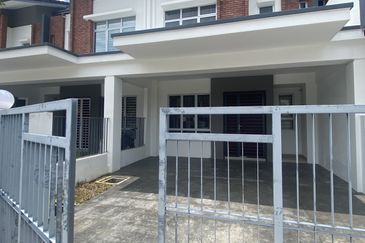
Livia @ Bandar Rimbayu
Telok Panglima Garang, Selangor

Robin @ Bandar Rimbayu
Telok Panglima Garang, Selangor
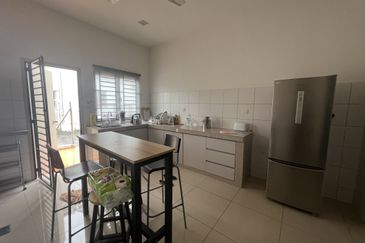
Penduline @ Bandar Rimbayu
Telok Panglima Garang, Selangor
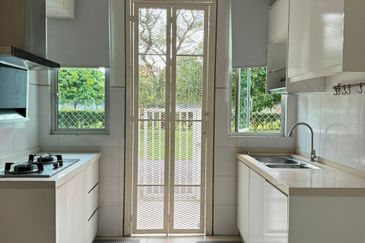
Chimes @ Bandar Rimbayu
Telok Panglima Garang, Selangor

Penduline @ Bandar Rimbayu
Telok Panglima Garang, Selangor

Taman Tun Dr Ismail (TTDI)
Taman Tun Dr Ismail, Kuala Lumpur

Pangsapuri Akasia, Bandar Botanic
Bandar Botanic/Bandar Bukit Tinggi, Selangor
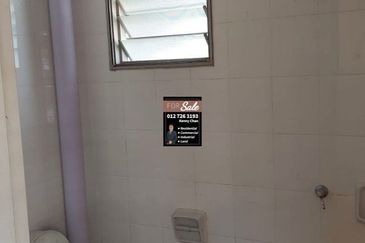
Pangsapuri Akasia, Bandar Botanic
Bandar Botanic/Bandar Bukit Tinggi, Selangor
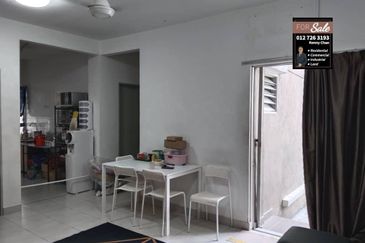
Pangsapuri Akasia, Bandar Botanic
Bandar Botanic/Bandar Bukit Tinggi, Selangor

Bandar Bukit Tinggi
Bandar Botanic/Bandar Bukit Tinggi, Selangor
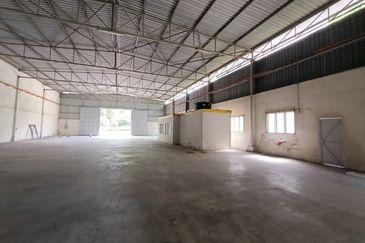
Kawasan Industri Desa Aman
Sungai Buloh, Selangor

